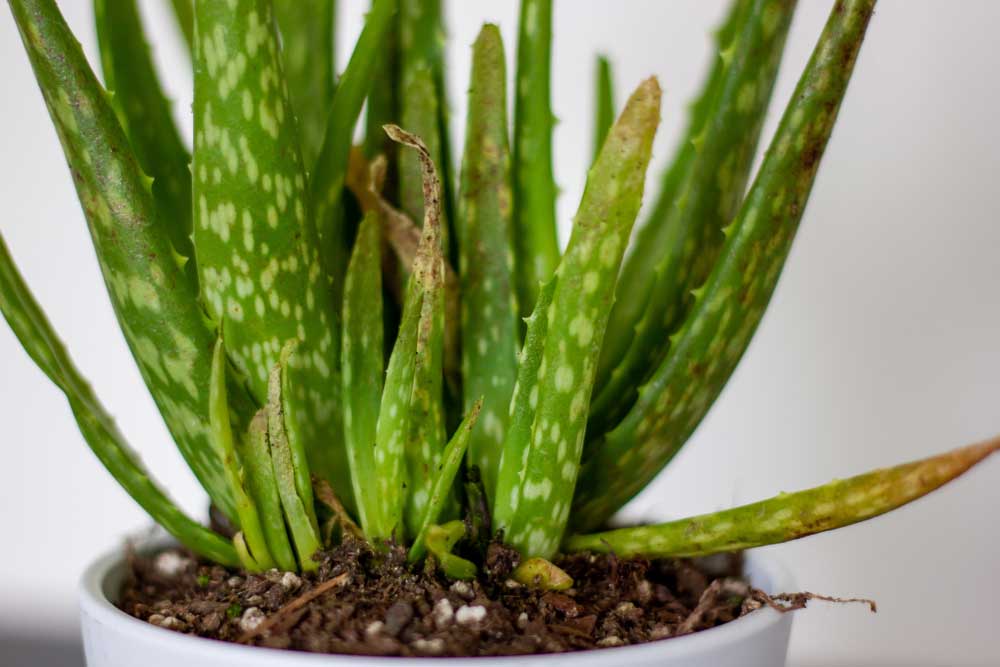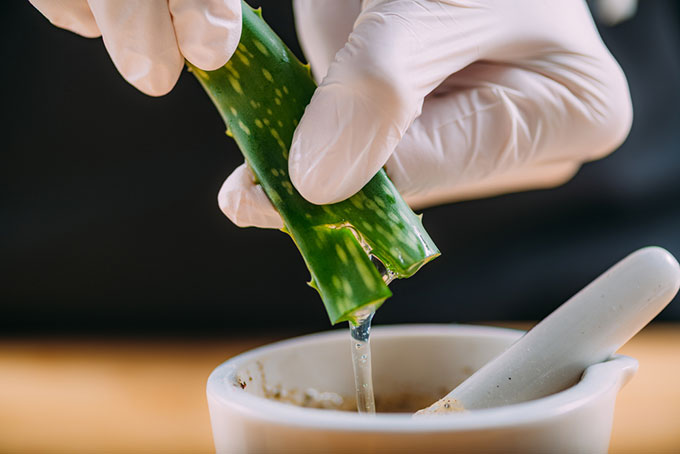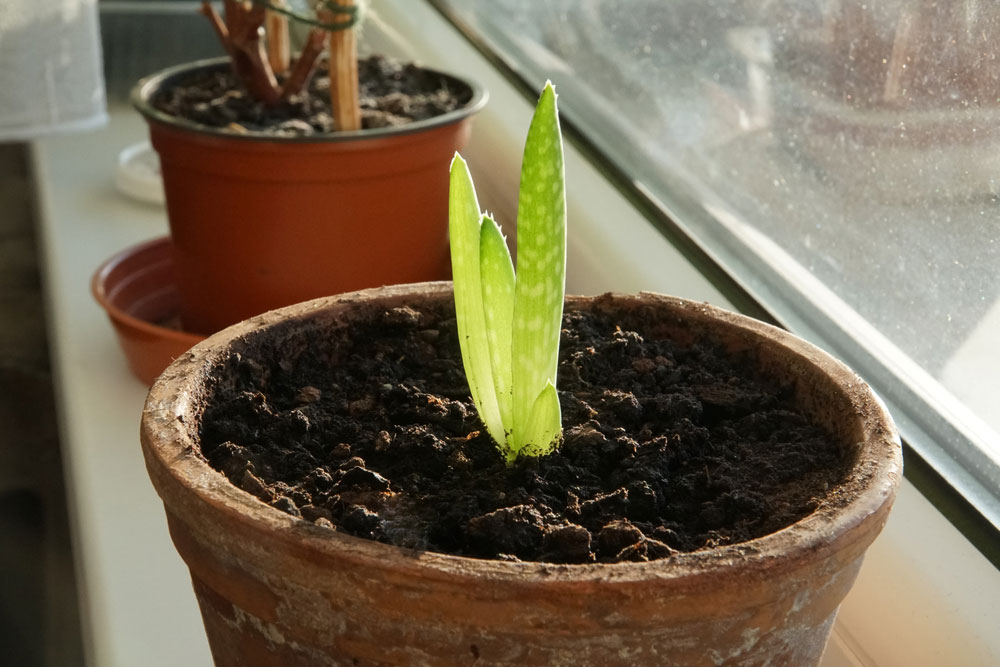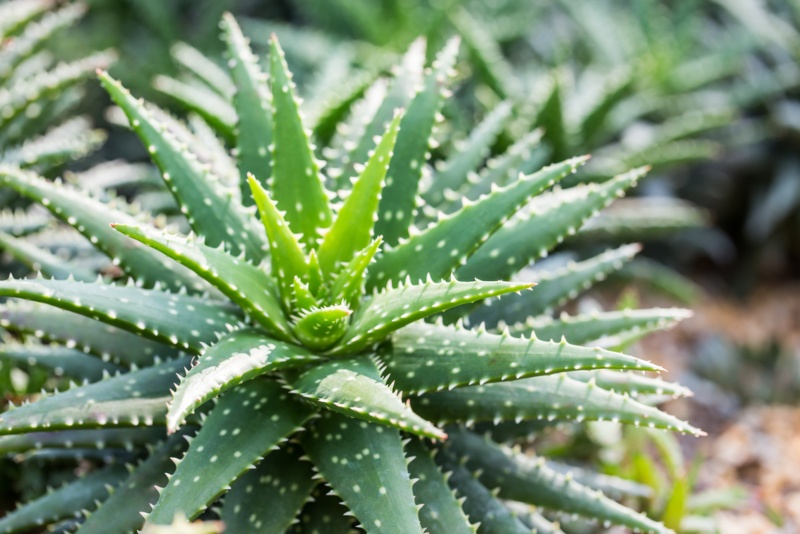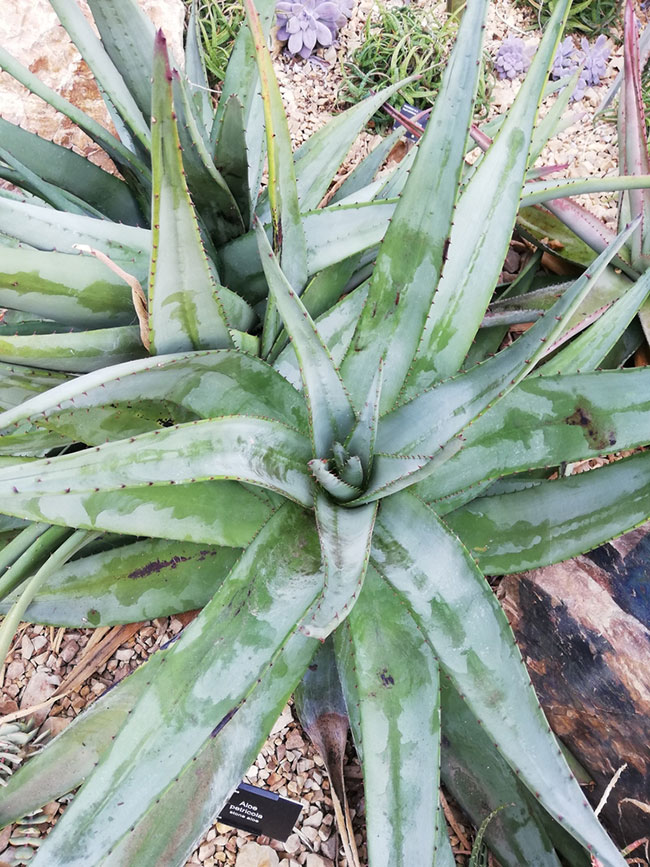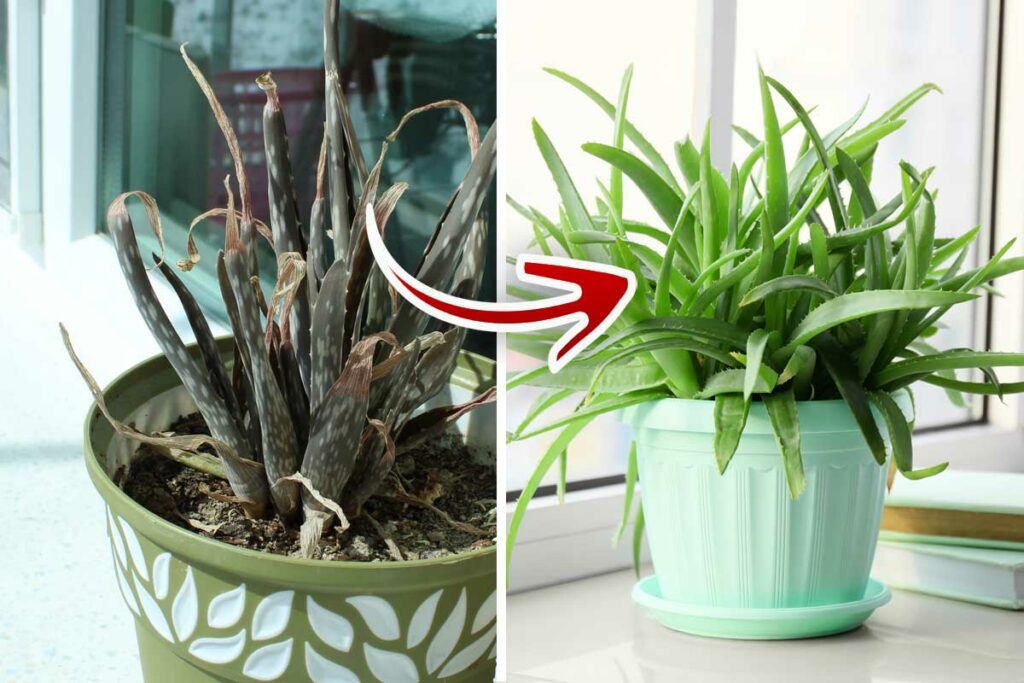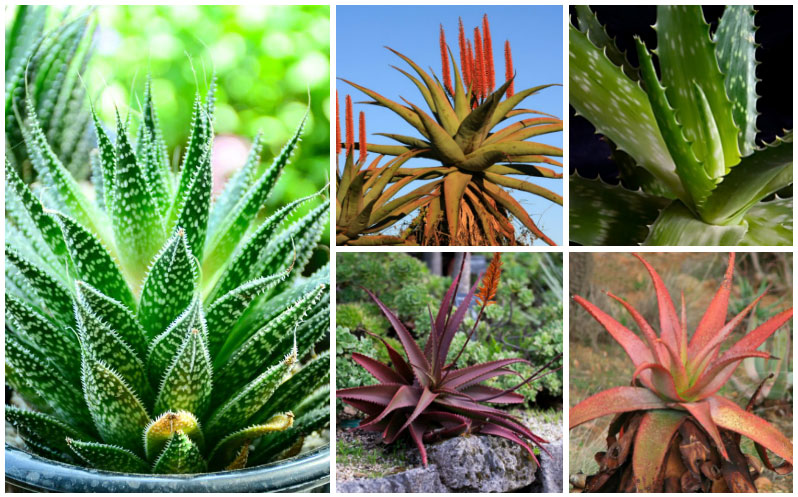
Humans have grown the aloe plant for thousands of years for decoration and medicinal purposes.
Aloe, which is also called the Wonder Plant, has therapeutic benefits and the gel of some varieties can either be applied directly to the skin or used in the form of pills to promote health and well-being.
What are the Different Types of Aloe
Aloe grows best in full sun and partial shade. It thrives in zones 8 through 11, although it’s best kept indoors in zones 8 and 9.
According to the World Checklist of Selected Plant Families, there are currently about 580 species of Aloe. In this article, we discuss 20 of the most popular ones.
1. Aloe Barbadensis Miller
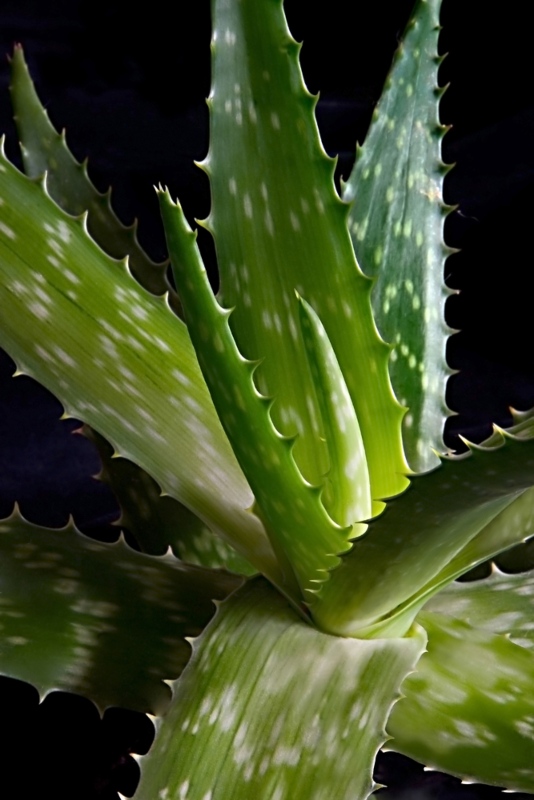
This is one of the most common types and is very popular due to its healing properties. The gel produced when you cut the leaves help burns heal fast and resolve lots of skin and hair issues. This plant grows yellow flowers and has white spots that appear on the leaves but tend to disappear as the plant grows older.
2. Aloe Crosby’s Prolific
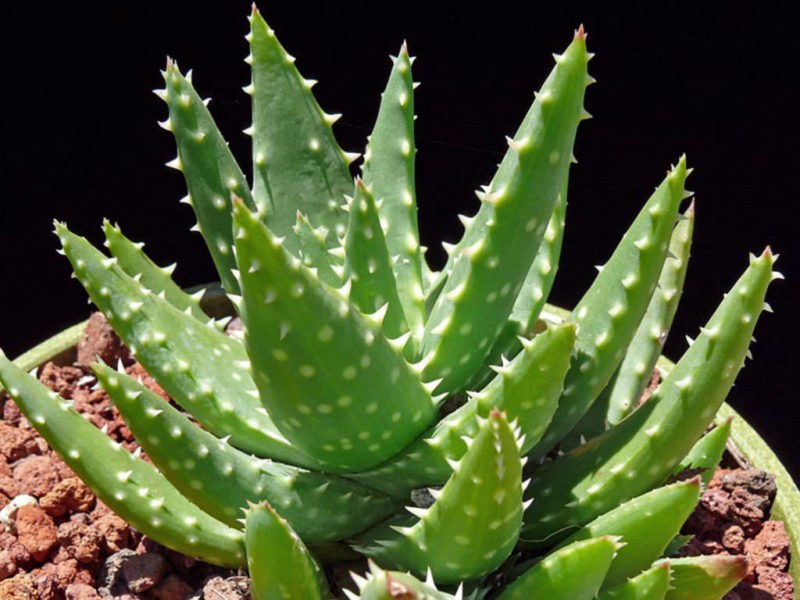
This miniature or dwarf aloe has long leaves with translucent teeth. The plant grows orange-red flowers and the leaves turn red in the sun, contributing to the beauty of your landscape design. It’s suitable for containers and beds.
3. Aloe Rubroviolacea
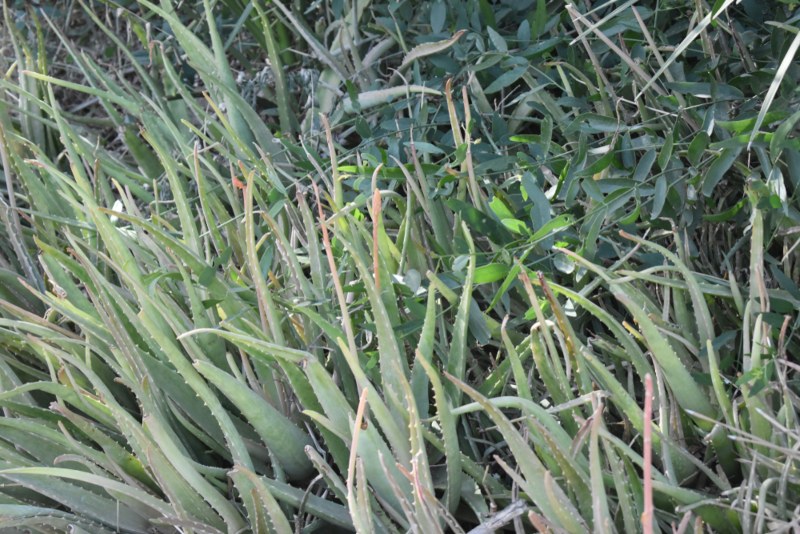
Arabian Aloe is tolerant of drought. It grows beautifully in beds, borders, containers, patios, and gardens.
The plant looks outstanding with its blue-green leaves and the reddish teeth that surround them. The leaves turn purple in full sun. It grows dense spires of red flowers in winter and is virtually disease-free.
4. Aloe Ferox
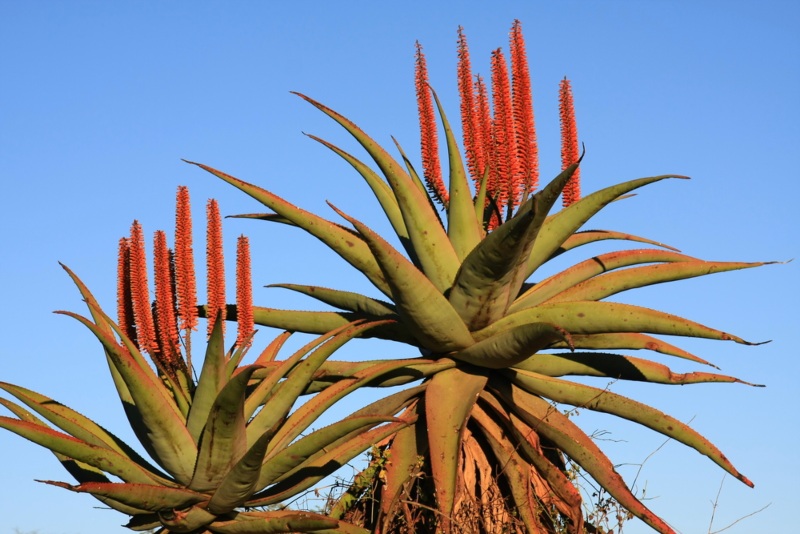
Aloe Ferox is also known as Cape Aloe. Each leaf has brown teeth and spines, especially in the lower part.
The plant produces large bright orange flowers. The transparent gel of the Cape Aloe is used in burn ointments and other skincare products, in addition to food supplements.
5. Aloe Microstigma
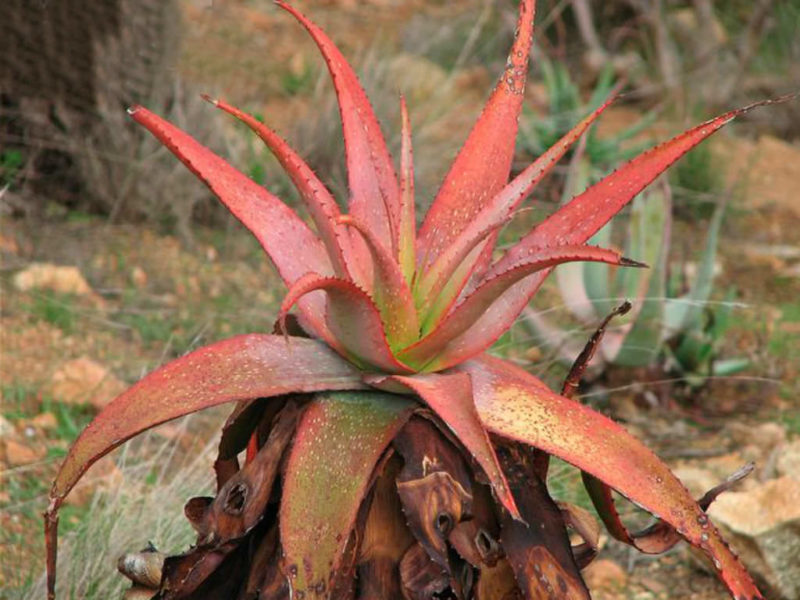
The small clumps of this evergreen plant change to purple or red when it suffers from stress. The leaves have white spots and red teeth along the edges.
You can water it once a week in summer and not at all in winter so it’s quite easy to maintain. The plant blooms in winter and grows reddish-orange flowers that reach a height of 3 feet.
6. Aloe Broomii
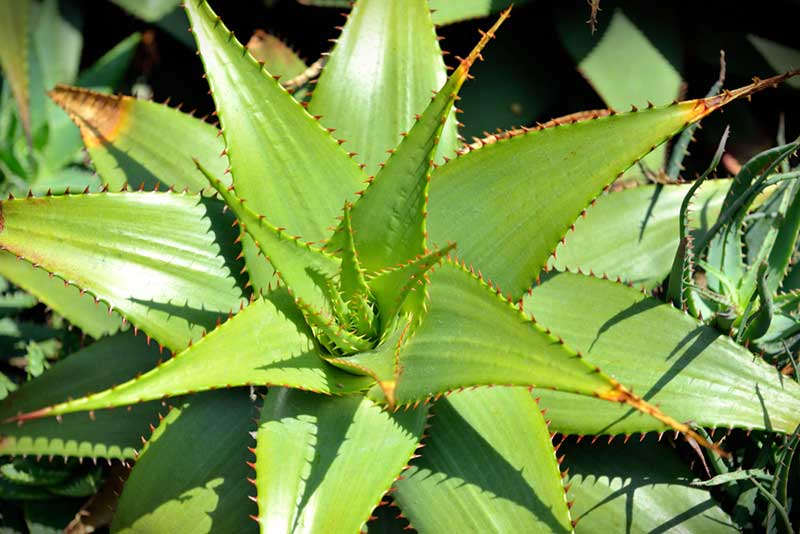
Snake Aloe is one of the most famous ornamental aloe plants thanks to the light green leaves. The candle-like lemon flowers attract birds. The plant grows beautifully in gravel and rock gardens.
7. Aloe Aculeata
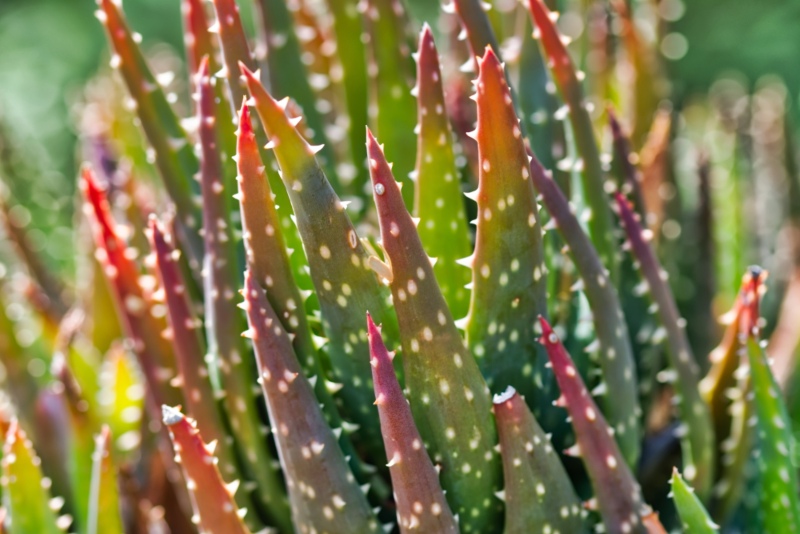
This one is known as Red Hot Poker Aloe and is native to South Africa. The word Aculeata means prickly and refers to the spines and teeth on the plant.
It has orange-yellow flowers that bloom between August and October. It can grow in beds and containers as long as it’s protected from the winter rain.
8. Aloe Marlothii
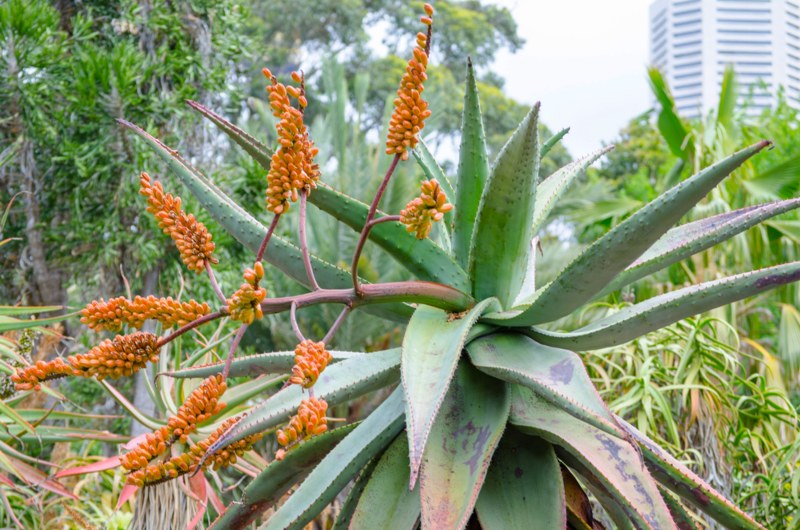
The fleshy leaves of this aloe can reach a height of 5 feet and have a broad base tapering to a sharp point. These leaves have reddish-brown spines along the edges and sometimes on the lower and upper surface of the leaves.
The plant grows flowers that are red, orange or yellow and attract nectar-feeding birds. It grows beautifully in rock gardens.
9. Aloe Cameronii
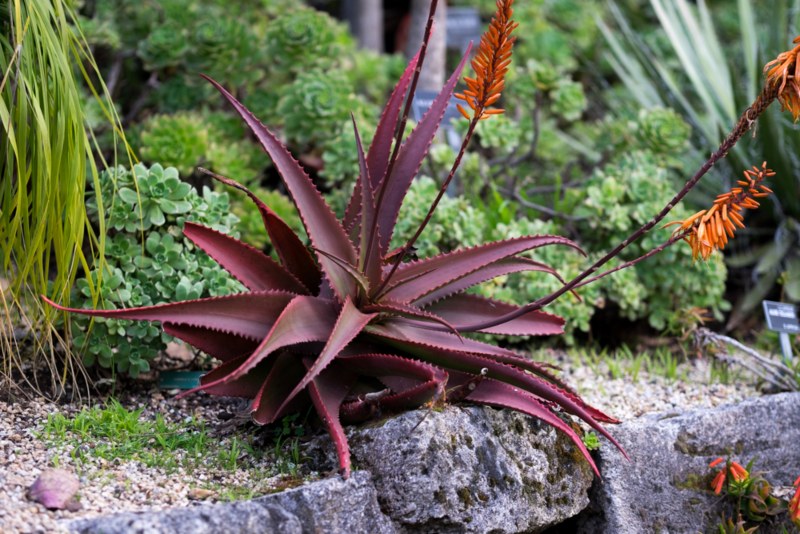
The rich red copper leaves are the main reason why the Red Aloe is so popular. The color of the leaves depends on the exposure to sun and water. In late fall, it starts to grow red-orange flowers.
10. Aloe Maculata
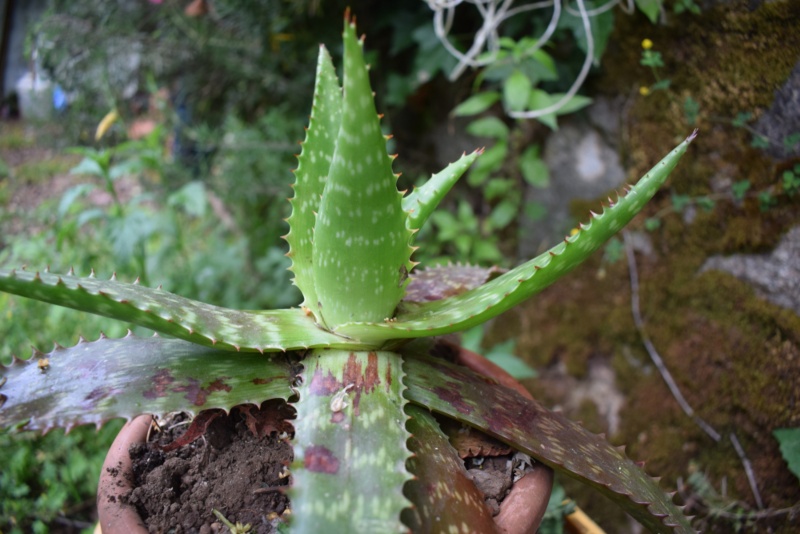
Soap Aloe is also known as Aloe Saponaria and has spotted leaves that can be green or red. The plant gets its name from soap because it makes a soapy lather in water, which is usually used by the locals.
It grows bright reddish-orange flowers but the seeds are poisonous. This plant is salt tolerant but gets really damaged if the temperature drops below 32 °F.
11. Aloe Arborescens
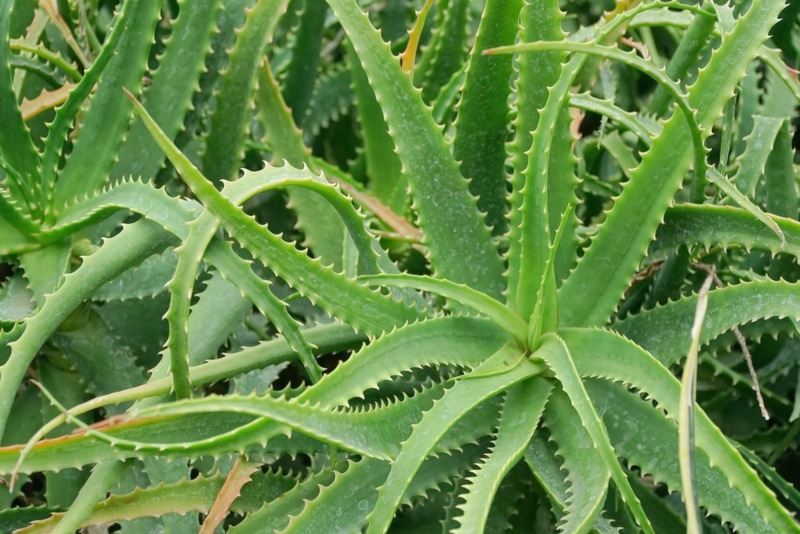
Gardening enthusiasts value the Aloe Arborescens because of its evergreen leaves and bright reddish flowers. The name means “tree-like” because it can reach the size of a tree.
Some modern studies suggest that this plant can help with cells proliferation, which typically increases when there are tumors in the body. However, you should consult your doctor about the best way to incorporate this plant into your therapy plan.
12. Aloe Petricola
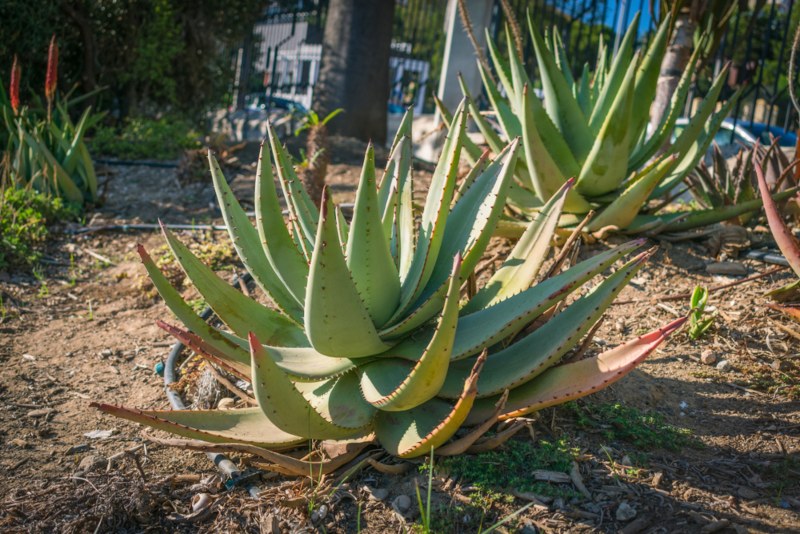
This is widely known as Stone Aloe. It’s very popular among gardening enthusiasts thanks to the bright colors of its inflorescences and blue-green leaves.
Stone Aloe grows from early to mid-winter but the flowers bloom in July. It’s a low maintenance succulent plant that can grow in the stony ground with only some soil covering its roots.
13. Aloe Ciliaris
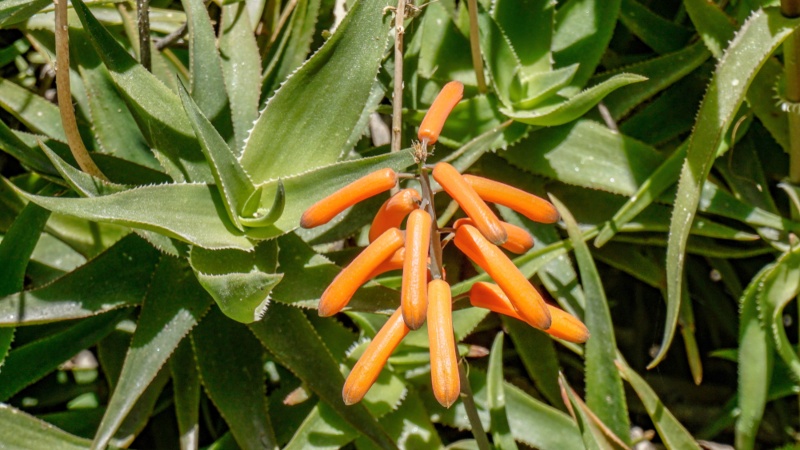
This type of aloe has fine white hairs that grow on the margins of the curved leaves. Its name means climbing aloe because it grows very quickly, producing bright orange flowers that bloom between November and April.
Aloe Ciliaris is a good houseplant and attracts bees and butterflies when kept outside. It’s one of the easiest plants to grow from cuttings.
14. Aloe Striata
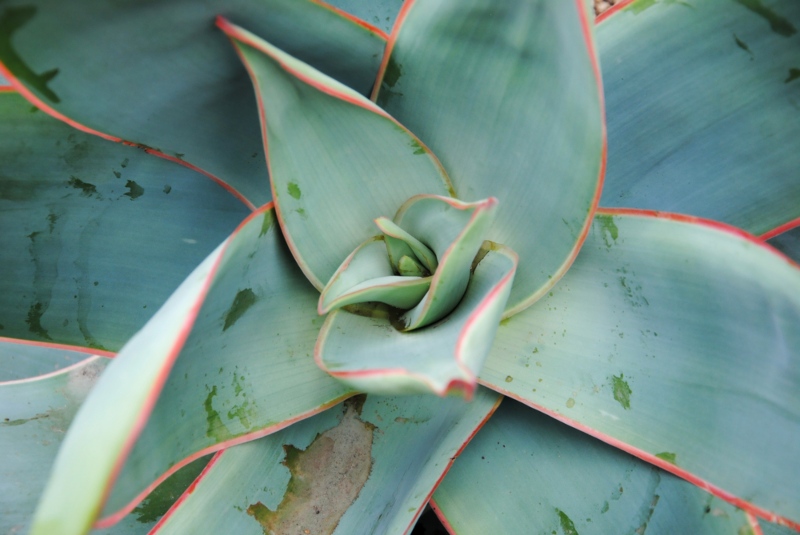
Coral Aloe has toothless flat broad leaves that are rather pale green but turn pink in the sun. The tubular clusters of coral-orange flowers grow from late spring until early winter.
15. Aloe Hereroensis
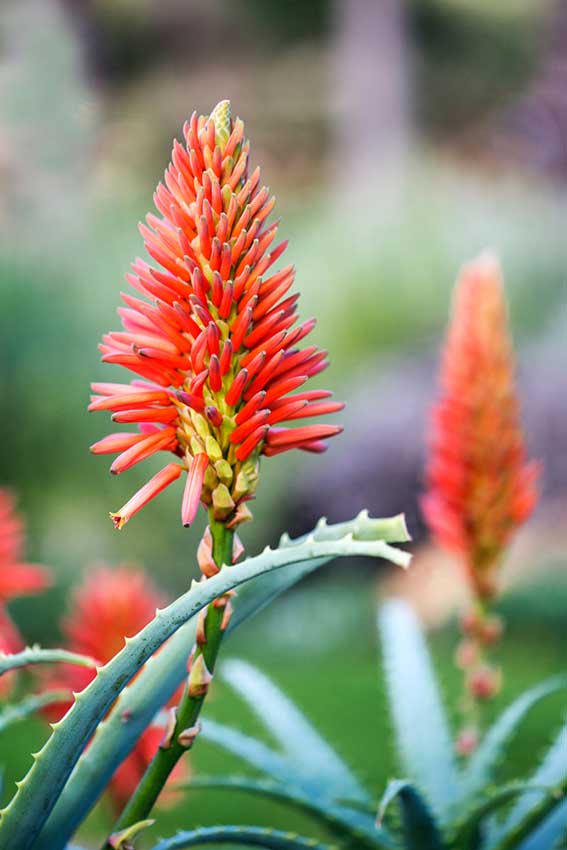
Sand Aloe has pale blue-green leaves that turn rose-colored in the sun. The leaves are lined with red-brown spines and grow eye-catching scarlet red flowers. It’s a good choice for borders and beds.
16. Aloe Polyphylla
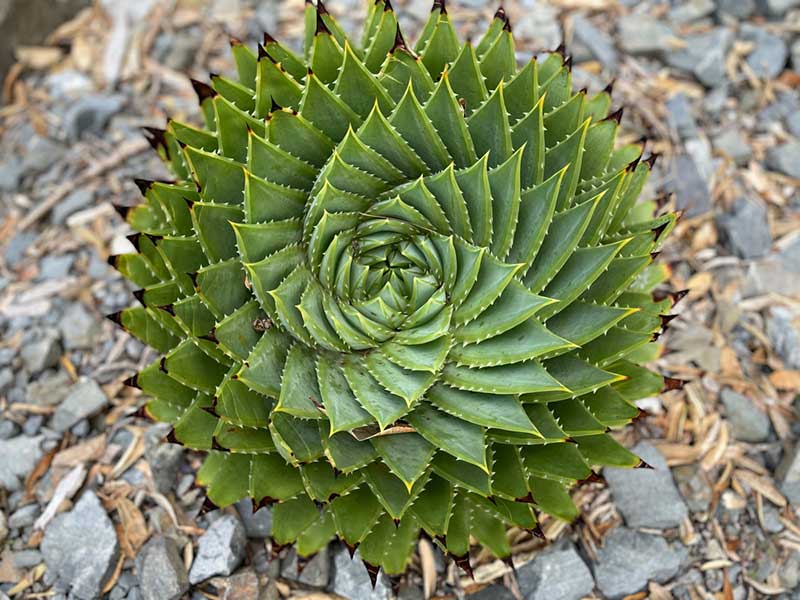
This aloe has distinctively-arranged foliage in a spiral pattern. A single plant can have up to 150 leaves arranged in 5 ranks. It rarely blooms but when it does, it grows salmon-pink flowers that attract bees.
17. Aloe Brevifolia
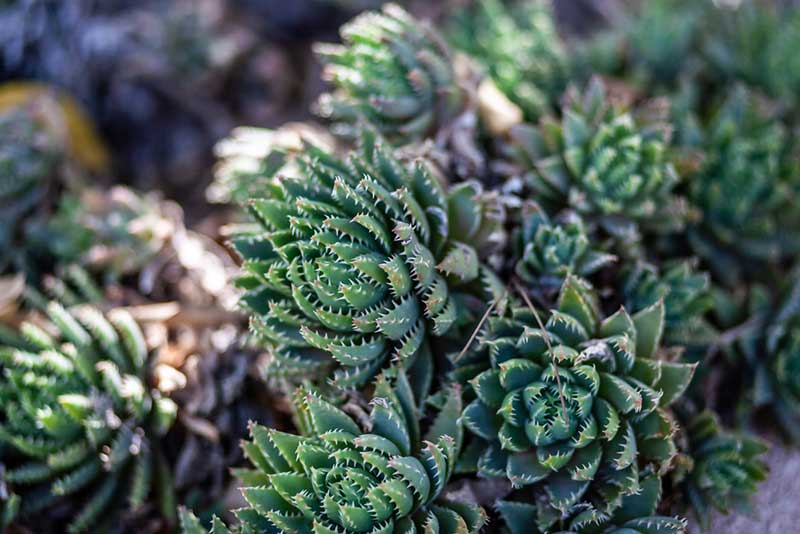
Short-Leaf Aloe forms a carpet of colorful rosettes. The plant tolerates partial shade and grows pale green leaves that turn golden yellow and rosy-pink in full sun. It’s an excellent choice for containers and groundcovers and grows tubular orange flowers in late spring.
18. Aloe Aristata
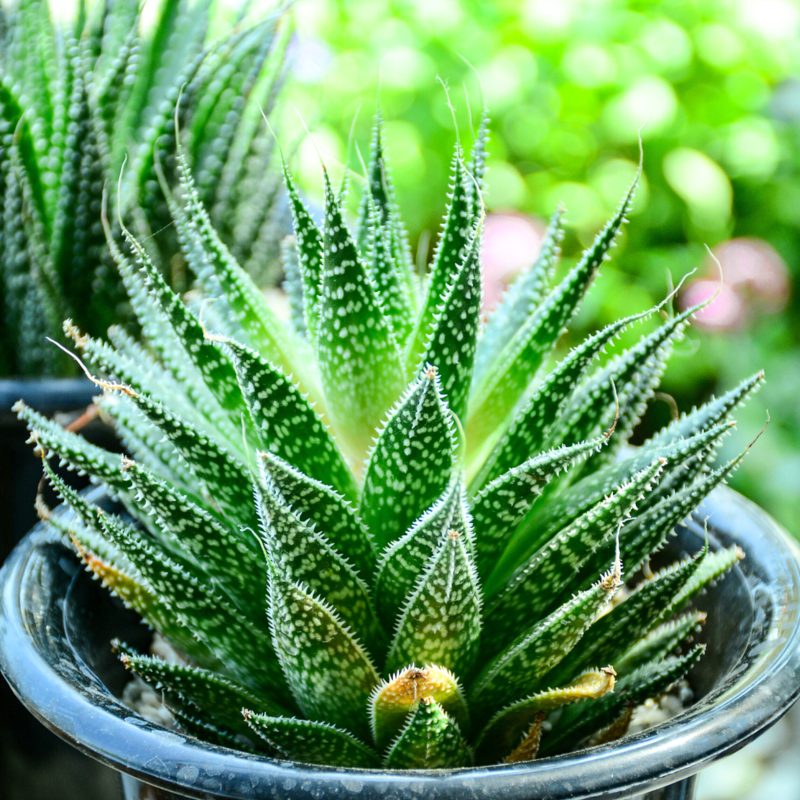
The leaves of the Torch Plant or Lace Aloe are pale green in the shade but become dark green in full sun. The incurved leaves have tufted tips and are lined with white teeth along the edges.
It forms clumps and grows red-orange flowers in winter. This plant prefers partial shade, especially in the strong afternoon sun.
19. Aloe Plicatilis
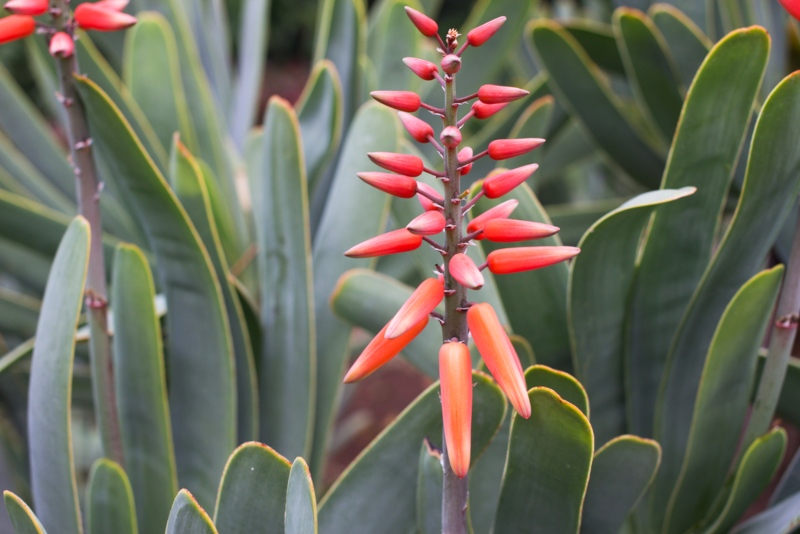
The Fan Aloe has a unique fan-like leaf arrangement. The light blue-green leaves usually have orange edges. This shrub-like arrangement grows bright pink flowers out of every leaf cluster. They’re full of nectar and attract birds.
20. Aloe Capitata Var. Quartziticola
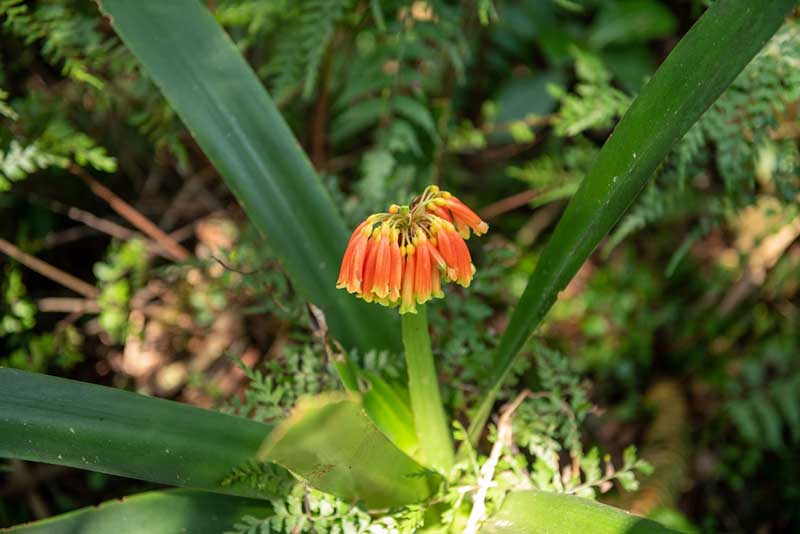
This aloe has milky-blue leaves when grown in partial shade but they become purple-tinged when exposed to the sun. This plant produces a branched flower stalk with a round flower head. Each bell-shaped flower is glossy orange and opens to reveal a golden-yellow interior. Unlike other types of aloe, this one can tolerate a little freeze.
Aloes are typically easy to grow and maintain. Nevertheless, understanding the differences between types will help you decide on the right one to add to your garden.





